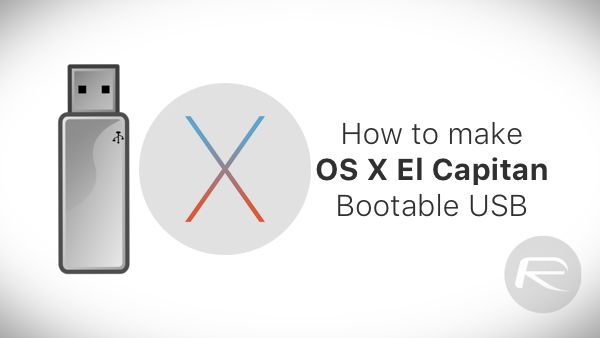To create a bootable El Capitan installer drive, you need the El Capitan installer from the Mac App Store and a Mac-formatted drive that’s big enough to hold the installer and all its data. This answer assumes you want the El Capitan USB installer to install El Capitan on an older Mac capable of running Snow Leopard (OS X 10.6). In this case, you can solve the problem by using the older Mac to create the El Capitan USB installer.
USB Drivers Download
USB.GetParts.us is best place to get exotic and hard to find drivers for your USB hardware. All our uploads are 100% save, tested with top antivirus software.
 Driver File Name: install-el-capitan-from-usb-drive.exe
Driver File Name: install-el-capitan-from-usb-drive.exeDriver Upload Date:
 16 December 2020
16 December 2020Last Driver Version: 8.9.7
Driver File Size: 13,425 KB
El Capitan Usb Installer Download
 User Driver Rating: 4.7/5
User Driver Rating: 4.7/5 El Capitan Boot Disk
Downloaded: 67,378 times

El Capitan Usb Installer From Windows
Last Time: 24 September 2021Comments
17-Sep-21 23:39
That’ coming along nicely.
03-Sep-21 12:27
Tremendous!
29-Aug-21 03:04
I’m impressed.
11-Jun-21 01:46
Cool!
25-Mar-21 09:43
Way to go!
13-Mar-21 17:24
You’ve got it made!
21-Jan-21 09:14
love Install el capitan from usb drive
19-Jan-21 17:06
I'll give it a shot, hopefully that works!
05-Jan-21 00:03
Thanks for this awesomeee program, works fine... Install el capitan from usb drive
21-Dec-20 13:15
great download
20-Dec-20 17:22
Phenomenal.
08-Jul-20 00:06
Wow!
20-Jun-20 16:48
THANKS AGAIN.
07-Jun-20 06:28
Congratulations!
16-Mar-20 08:03
perfect.thanks.
20-Jan-20 20:38
omg, it is so easy! :)
More drivers for Install el capitan from usb drive
portable-blu-ray-drive-usb-30renesas-electronics-usb-30-host-controller-driver-for-windows-10usb-driver-zte-blade2tb-usb-flash-drive-priceusb-driver-for-windows-7-32-bitasus-windows-7-usb-driverlava-iris-870-usb-driverdriver-usb-cho-samsungusb-c-driver-for-windows-7wireless-usb-adapter-driver-windows-xpusb-driver-crashcrystal-usb-driverestart-mac-from-usb-drivetp-link-usb-print-server-tl-ps110u-driverconnect-usb-drive-to-ipad-mini1-gig-usb-flash-drive-bulkusb-midi-cable-driver-windows-10usb-dvb-t-stick-driververbatim-usb-driveasus-oem-usb-driver-download
I'm a bit confused by your post on what you are trying to do here. Are you trying to boot into Recovery Mode to install macOS to an external USB drive or are you trying to boot from a macOS USB installer to install macOS to the internal drive?
Here are the instructions for creating a bootable macOS USB installer:
Make sure to carefully read the section regarding macOS 10.11 as there are extra steps required to extract the real installer from the downloaded .dmg archive to the Applications folder. After running the .pkg file from the mounted .dmg file you can then proceed to use the command line to create the bootable macOS USB installer itself.
Macs are very picky about the drives used for booting a Mac plus the quality of many USB sticks is extremely poor so try using another USB stick especially a different brand.
When erasing the drive make sure to select the whole physical drive within Disk Utility and erase the physical drive as GUID partition and MacOS Extended (Journaled). The physical drive should be the top most item which is usually identified by the make & model of the drive itself.
Aug 21, 2021 12:52 PM